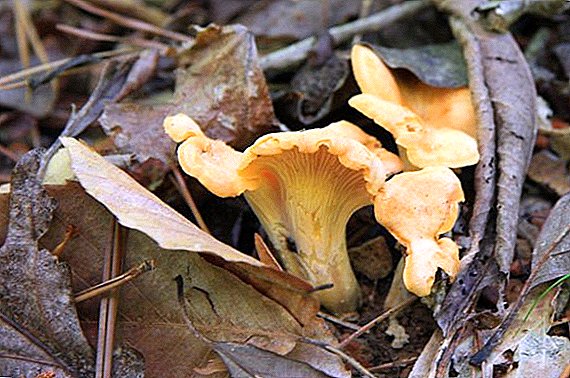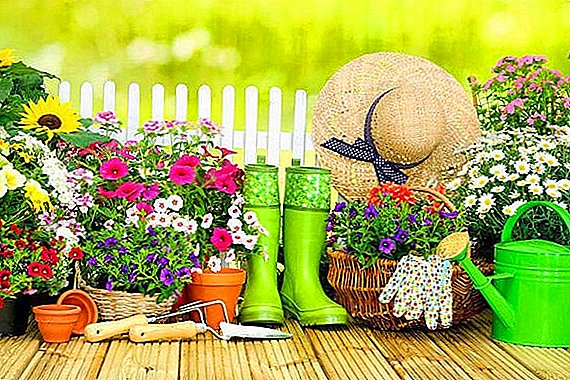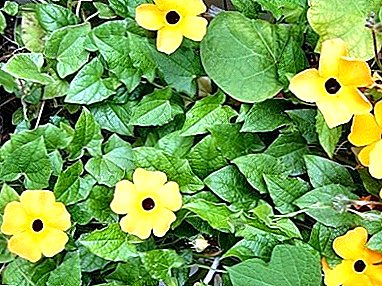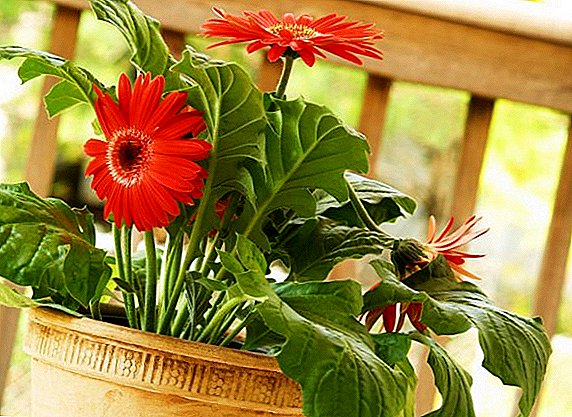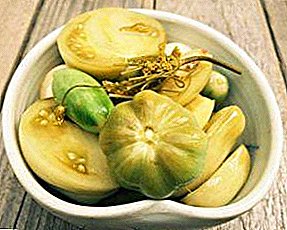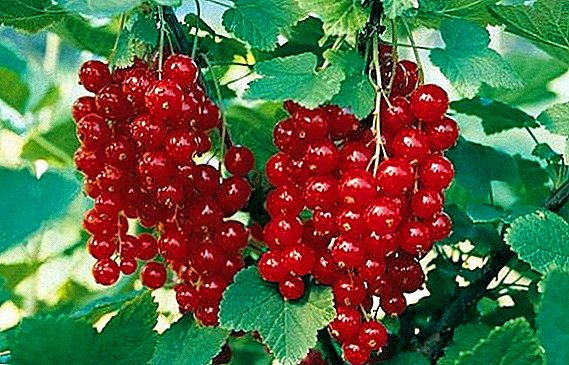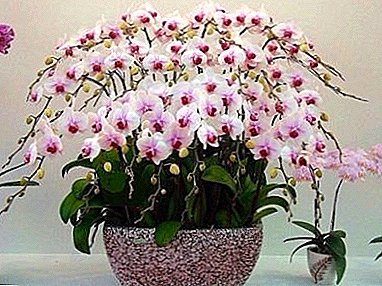
The roots for the plant - an extremely important organ that supplies it with moisture and nutrients. The role of roots in the life of any plant is enormous. That is why proper care for them is of paramount importance.
Orchids are not an exception - however, in these exotic flowers the roots are arranged and functions somewhat differently than in most species familiar to us. When caring for an orchid, this should be known and taken into account.
Structure and role in the life of the plant
The main function of the roots of any plant is to absorb water and nutrients from the substrate.on which it grows. Of course, the plant cannot suck water in the literal sense of the word, since it has no muscles. Moisture enters the roots in a different way - it moves from the soil to the root cells by osmosis.
Osmosis is a rather complicated process that can be simplified described as follows: water molecules move from a zone of high concentration (soil) to a zone of low concentration (root cells) through a semipermeable cell membrane.
Moisture absorption from the soil occurs in the rhizodermis - a thin top layer of the root, literally one or two cells thick. In most plants, to increase the efficiency of the process, the rhizodermis is covered with microscopic root hairs.
Then the moisture gets into the next layer - the exoderm. This layer is heterogeneous: large thick-walled cells that do not have cytoplasm and small living cells that can pass water alternate in it. Through the exoderm, water seeps into the root, passes through the bark - the root layer in which chloroplasts are located - and reaches the center of the root, the so-called axial cylinder, which consists of educational and conductive tissues and is responsible for transporting moisture and nutrients to all other plant organs.
The roots of orchids are arranged on the same principle, however, there are significant differences.
Features
Features of the root system in these plants are due to their lifestyle. Unlike most plants, orchids do not root in the soil. They grow on stones or other plants, which serve as a kind of “support” for them, in rare cases they “spread” over the ground, but never grow into it. Orchid water is absorbed from humid air - in the tropics and subtropics, in the homeland of these flowers, thick fogs and rains are very frequent. Nutrients, however, these plants are extracted from debris - leaves, bark, humus.
 Orchids do not need to be immersed in the soil for water and nutrition. They hang freely from a stone or a branch, catching moisture from the air, or partially hidden under a layer of rotten leaves. What kind of root system does a flower have? The roots of these plants are called “airy” because they are located above the ground, but you should not look for the usual “underground” roots of an orchid - the plant simply does not have them.
Orchids do not need to be immersed in the soil for water and nutrition. They hang freely from a stone or a branch, catching moisture from the air, or partially hidden under a layer of rotten leaves. What kind of root system does a flower have? The roots of these plants are called “airy” because they are located above the ground, but you should not look for the usual “underground” roots of an orchid - the plant simply does not have them.
Since the orchid's roots do not come into contact with the soil, they do not need a rhizoderm — the suction layer — with root hairs. Instead, the surface of the root is covered with a special cloth - belamen. Strictly speaking, this is the same rhizoderm, only its cells are not alive, but keratinized; The fabric of the velamen is porous and resembles a sponge.
Attention! The velamen layer can be thin, only one cell, as well as the usual rhizoderm (such a thin layer is found in orchids growing on the soil surface), and it can reach a thickness of 19 cells (most orchid species living in trees).
Since dead cells are not suitable for osmosis, The process of getting orchid liquid looks different - and very peculiar:
- during rain or fog, water enters the root surface and the dry membranes of the velamen cells swell;
- on the inner walls of the cavities of the Velamen lamellae are formed - water strips;
- lamellae gradually merge under the action of gravity and surface tension;
- large "drops" are drawn in and out the air.
Thus, water flows from the velamen layer into the exoderm, and from there through the bark to the axial cylinder. In addition to trapping and holding moisture, this unusual fabric also has a protective function - a thick layer of velamen protects the air roots of orchids living on stones and trees from damage. In addition, not so long ago, it was discovered that mushrooms and microalgae settle in the pores of the Velamen, helping the plant to process the potassium and phosphorus salts that are vital for it.
What does the root system of a healthy flower look like?
Because at home it is impossible to “plant” an orchid on a bush or a stone; flower growers place them in a special loose substrateimitating litter. It may consist of moss, pieces of bark, sawdust, etc. In this case, part of the roots of an orchid is immersed in the substrate, while a part remains on the surface.
The aerial roots located above the surface of the substrate have a white-silver color, which is attached to them by the velamen layer. When moistened, the velamen becomes translucent, and through it the chloroplasts in the exoderm become visible - the root takes on a bright green color. The chloroplasts in the roots of orchids are quite “workers” - they are capable of photosynthesis, and in some species the roots are full-fledged photosynthetic organs on a par with the leaves.
The roots, immersed in the substrate, look different - since there is practically no light on them, and the chlorophyll is not produced in them, they are darker and often have a yellowish or brown tint. At beginning flower growers, darkening of the “underground” roots of an orchid often becomes a cause for concern. However, in this situation it is completely unnecessary.
A photo
Then you can see in the photo, what should be the roots of a healthy plant:




How to care at home?
Despite reliable velamen protection, orchid roots are very sensitive and require special care conditions. However, knowing about the features of the root system of these plants, it will be easy to create the necessary conditions:
- First of all, the roots of orchids need constant air circulation - even those that are in the substrate. That is why in no case can orchids be planted in ordinary soil - the root system cannot “breathe” in it.
For them, only a loose woody substrate is suitable, which also should not be too dense. It is also advisable to make ventilation holes in the walls of the pot.
- Orchid roots cannot absorb water from the substrate - the velamen layer is not suitable for osmotic processes and can only absorb water deposited directly on it.
Therefore, aerial roots must be periodically moistened. There are many ways to irrigate orchids, but the most common is to put a pot with a plant in warm water for about half an hour.
- Do not water or “bathe” the orchid too often - the root system of this plant is easily susceptible to decay. After each watering, it is necessary to let the substrate dry out - depending on the composition of the substrate, this process can take from two days to two weeks.
Diseases and their treatment
The most common problems that orchid owners face are rotting and drying up the roots.
- The cause of decay often becomes improper watering - too frequent or too abundant. Detection of dead roots - a signal that it is necessary to revise the mode of irrigation. The roots themselves, unfortunately, can not be reanimated - they will have to be removed. And it is necessary to do this as quickly as possible, otherwise the rot will move to healthy roots.
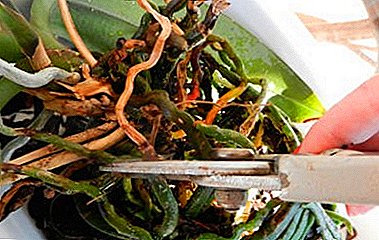 Drying comes either due to lack of moisture, or due to chemical burns with excessive concentration or improper selection of fertilizers.
Drying comes either due to lack of moisture, or due to chemical burns with excessive concentration or improper selection of fertilizers.In the first case, the roots need to be washed with soft water at room temperature and how to pour. In the second case, the plant will have to be transplanted into a less aggressive soil. If the root turned yellow and became brittle, it needs to be cut off - it will no longer be possible to “revive” it.
The orchid is a surprisingly beautiful exotic flower, deservedly beloved by many flower growers. Rules for caring for him are not as complex as it may seem, especially if you have an idea about the structure of the plant and its life cycle. Careful observance of simple recommendations will be rewarded with magnificent flowering.


 Drying comes either due to lack of moisture, or due to chemical burns with excessive concentration or improper selection of fertilizers.
Drying comes either due to lack of moisture, or due to chemical burns with excessive concentration or improper selection of fertilizers.